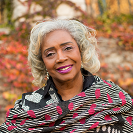On behalf of the Nominating Committee, I am delighted to report the results of the 1989 election for AHA offices. (Elected candidates are indicated with an asterisk.)
President (one-year term)
*David Herlihy, Brown University 3,157
President-Elect (one-year term)
*William E. Leuchtenburg, University of North Carolina, Chapel Hill 2,103
Leon F. Litwack, University of California, Berkeley 1,672
Vice President, Professional Division (three-year term)
*Susan M. Socolow, Emory University 1,866
John Womack, Jr., Harvard University 1,748
Council Members (three-year term)
Place 1
Arnita Jones, History Associates, Louisville, KY 1,711
*Robert L. Kelley, University of California, Santa Barbara 1,748
Place 2
*Barbara A. Hannawalt, University of Minnesota 2,196
William C. Jordan, Princeton University 1,336
Divisional Committee Members (three-year terms)
Professional
John Bushnell, Northeastern University 1,456
*Barbara Engel, University of Colorado, Boulder 1,785
Research
Lloyd E. Eastman, University of Illinois, Urbana-Champaign 1,504
*David Stam, Syracuse University Library 1,610
Teaching
Dennis C. Dickerson, Williams College 1,251
*Robert Brent Toplin, University of North Carolina, Wilmington 1,882
Committee on Committees
David A. Hollinger, University of Michigan 1,624
*Carole Shammas, University of Wisconsin, Milwaukee 1,765
Nominating Committee (three-year terms)
Place 1
*Pete Daniel, National Museum of American History 1,827
Barbara Howe, West Virginia University 1,467
Place 2
*Arvarh Strickland, University of Missouri, Columbia 1,708
Rosalyn Terborg-Penn, Morgan State University 1,511
Place 3
*Patrick J. Geary, University of Florida 1,881
Glenn W. Olsen, University of Utah 1,248
The total number of ballots cast in 1989 was 4,059, a higher level of participation even than 1983, when 3,875 members voted. I hesitate to speculate as to the cause(s) of this voting increase, but I suspect that it may reflect the growth in AHA membership, and quite possibly, I would like to think, the intellectual appeal, geographical and institutional diversity of this year’s slate of candidates.
Of the ballots cast, only 219 required hand counting, largely due to members’ use of pens instead of the stipulated number 2 pencil. In the weeks following the November 1st election deadline, AHA headquarters received more than forty additional ballots. This year National Information Services of Burnsville, Minnesota scanned the ballots for the results.
The Nominating Committee commenced its work in Washington, D.C. on Thursday, February 17th. A few of the more difficult-to-reach prospective candidates were contacted after the committee concluded its deliberations on Saturday, February 19, 1989. As former committee chairs have noted, the committee labored to present to the membership a slate that included historians working in, or associated with disparate institutions, both inside and outside of the academy and from every region of the country. This is not to claim full representation for every constituency. Clearly some historical areas need greater visibility and consideration. It is incumbent that the membership assume increased responsibility for making nominations. Indeed, I was grateful to the dozen scholars who informed me of likely candidates prior to the meeting of the committee. Two other, not unrelated issues surfaced during our deliberations.
Arguably, the most frustrating part of the nominating process is to discover that the ideal candidate in terms of scholarship, institutional affiliation, regional location, gender, race, ethnicity, field, or any combination of an array of likely criteria, is not a member. Thus the committee encourages the AHA to intensify membership drives to achieve even greater inclusion and diversity.
A second issue also gave us pause. All but two nominees accepted invitations to run for office. Those who demurred desired to avoid the pain of losing. In part, to alleviate some of the pain and/or embarrassment the committee recommended to the Council that it consider abandoning the custom of publishing election totals in Perspectives and simply announce the winners. The Council, however, chose to retain the practice.
Since 1985 the committee has nominated candidates for the special AHA award honoring distinguished scholars. The committee engaged in a rigorous effort to compile a list of senior scholars most deserving of this honor and recognition. The Council thereupon selected three recipients from the nominees submitted by the committee.
In closing, I would be remiss not to express the committee’s appreciation of the indispensable assistance and refreshing enthusiasm of Sharon Tune, AHA executive assistant and the judicious counsel and impeccable professionalism of executive director, Sam Gammon. On a more personal note, I am grateful for the opportunity to have served these past three years on a Nominating Committee characterized by colleagues sincerely committed to expanding opportunities for all in our chosen profession.


